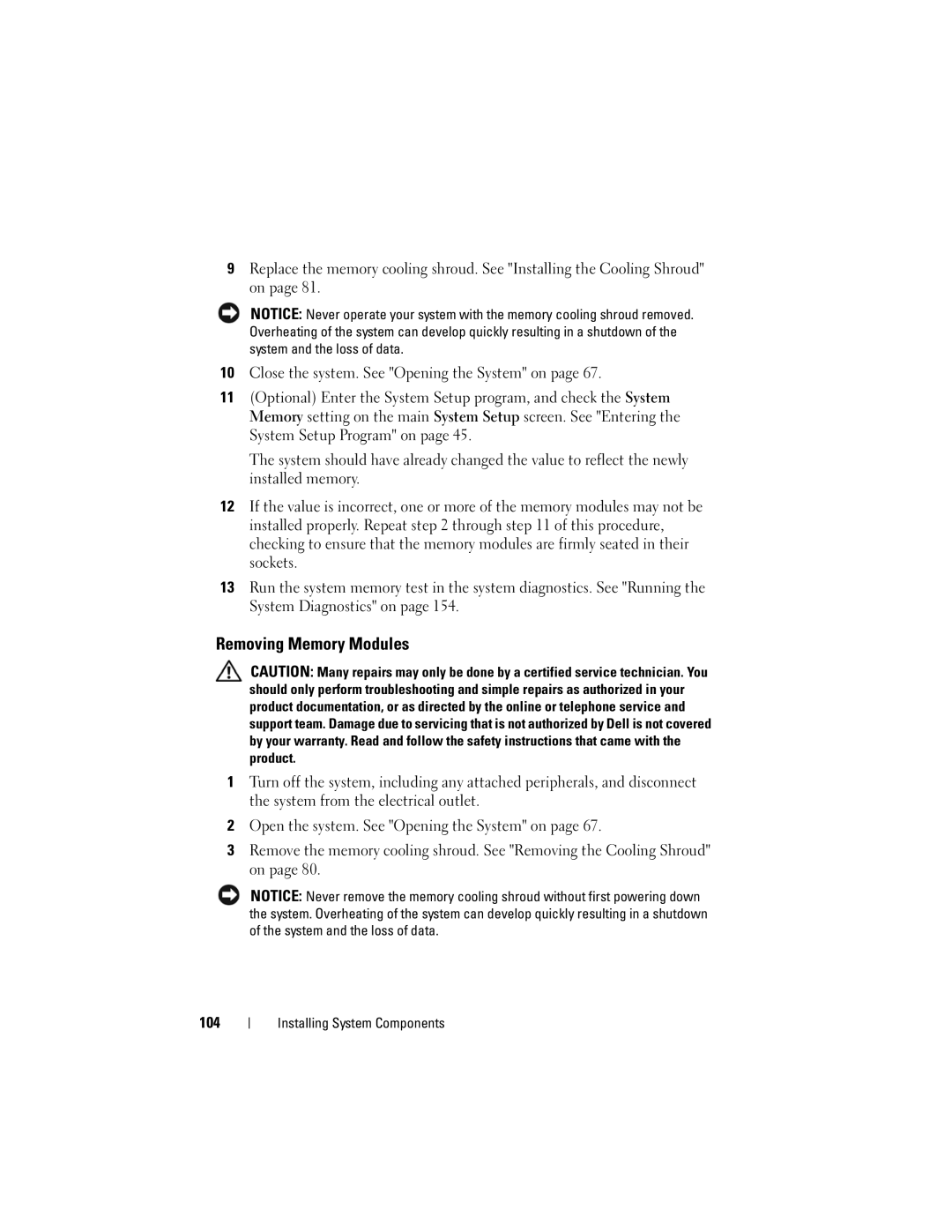9Replace the memory cooling shroud. See "Installing the Cooling Shroud" on page 81.
NOTICE: Never operate your system with the memory cooling shroud removed. Overheating of the system can develop quickly resulting in a shutdown of the system and the loss of data.
10Close the system. See "Opening the System" on page 67.
11(Optional) Enter the System Setup program, and check the System Memory setting on the main System Setup screen. See "Entering the System Setup Program" on page 45.
The system should have already changed the value to reflect the newly installed memory.
12If the value is incorrect, one or more of the memory modules may not be installed properly. Repeat step 2 through step 11 of this procedure, checking to ensure that the memory modules are firmly seated in their sockets.
13Run the system memory test in the system diagnostics. See "Running the System Diagnostics" on page 154.
Removing Memory Modules
CAUTION: Many repairs may only be done by a certified service technician. You should only perform troubleshooting and simple repairs as authorized in your product documentation, or as directed by the online or telephone service and support team. Damage due to servicing that is not authorized by Dell is not covered by your warranty. Read and follow the safety instructions that came with the product.
1Turn off the system, including any attached peripherals, and disconnect the system from the electrical outlet.
2Open the system. See "Opening the System" on page 67.
3Remove the memory cooling shroud. See "Removing the Cooling Shroud" on page 80.
NOTICE: Never remove the memory cooling shroud without first powering down the system. Overheating of the system can develop quickly resulting in a shutdown of the system and the loss of data.
104
